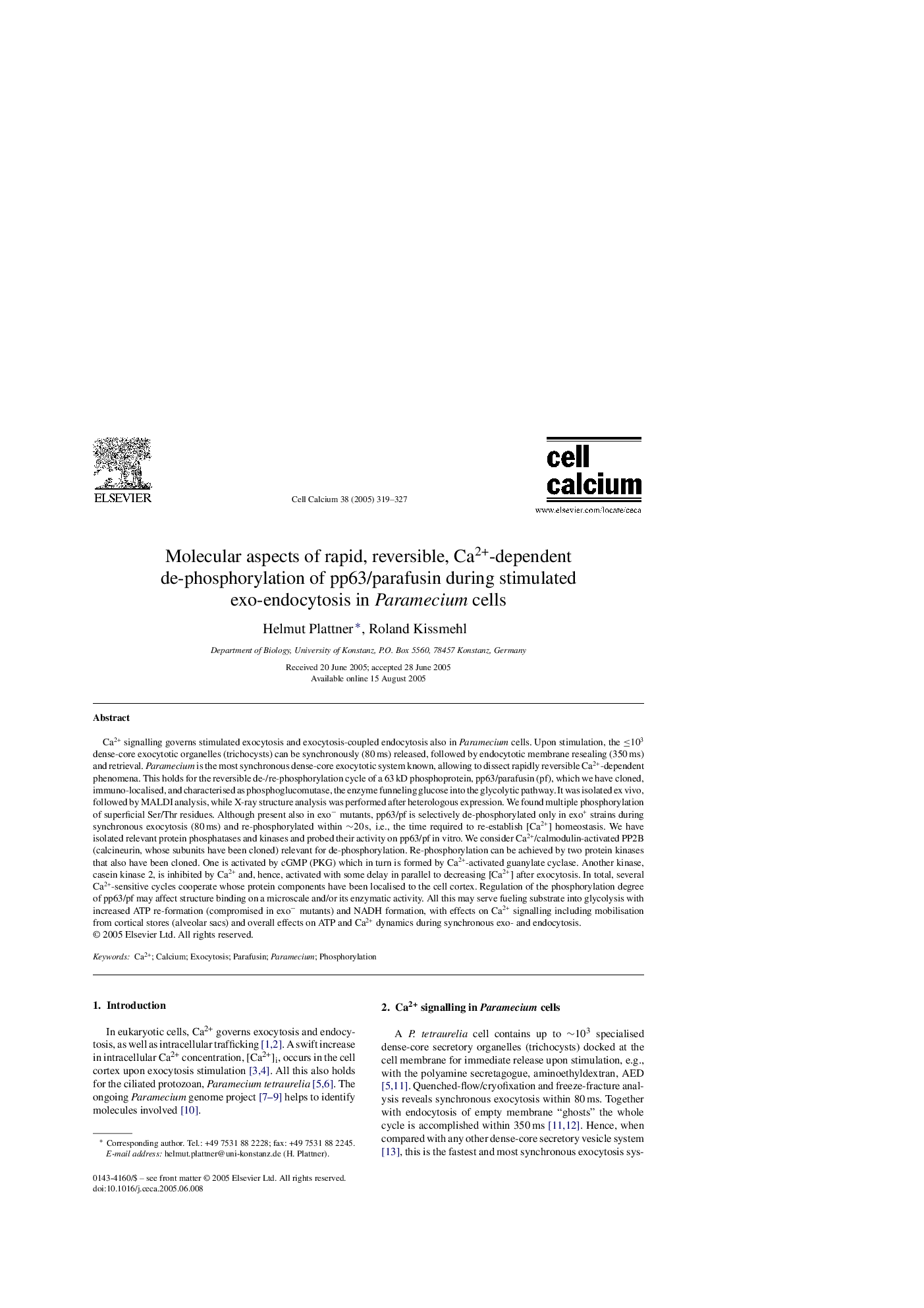| Article ID | Journal | Published Year | Pages | File Type |
|---|---|---|---|---|
| 9911946 | Cell Calcium | 2005 | 9 Pages |
Abstract
Ca2+ signalling governs stimulated exocytosis and exocytosis-coupled endocytosis also in Paramecium cells. Upon stimulation, the â¤103 dense-core exocytotic organelles (trichocysts) can be synchronously (80 ms) released, followed by endocytotic membrane resealing (350 ms) and retrieval. Paramecium is the most synchronous dense-core exocytotic system known, allowing to dissect rapidly reversible Ca2+-dependent phenomena. This holds for the reversible de-/re-phosphorylation cycle of a 63 kD phosphoprotein, pp63/parafusin (pf), which we have cloned, immuno-localised, and characterised as phosphoglucomutase, the enzyme funneling glucose into the glycolytic pathway. It was isolated ex vivo, followed by MALDI analysis, while X-ray structure analysis was performed after heterologous expression. We found multiple phosphorylation of superficial Ser/Thr residues. Although present also in exoâ mutants, pp63/pf is selectively de-phosphorylated only in exo+ strains during synchronous exocytosis (80 ms) and re-phosphorylated within â¼20 s, i.e., the time required to re-establish [Ca2+] homeostasis. We have isolated relevant protein phosphatases and kinases and probed their activity on pp63/pf in vitro. We consider Ca2+/calmodulin-activated PP2B (calcineurin, whose subunits have been cloned) relevant for de-phosphorylation. Re-phosphorylation can be achieved by two protein kinases that also have been cloned. One is activated by cGMP (PKG) which in turn is formed by Ca2+-activated guanylate cyclase. Another kinase, casein kinase 2, is inhibited by Ca2+ and, hence, activated with some delay in parallel to decreasing [Ca2+] after exocytosis. In total, several Ca2+-sensitive cycles cooperate whose protein components have been localised to the cell cortex. Regulation of the phosphorylation degree of pp63/pf may affect structure binding on a microscale and/or its enzymatic activity. All this may serve fueling substrate into glycolysis with increased ATP re-formation (compromised in exoâ mutants) and NADH formation, with effects on Ca2+ signalling including mobilisation from cortical stores (alveolar sacs) and overall effects on ATP and Ca2+ dynamics during synchronous exo- and endocytosis.
Related Topics
Life Sciences
Biochemistry, Genetics and Molecular Biology
Cell Biology
Authors
Helmut Plattner, Roland Kissmehl,
